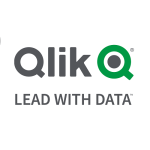What is our primary use case?
Microsoft BI can be useful for several scenarios, depending on your end audience, or what they're looking for. Depending on your creativity, imagination, and what the tool allows you to build, you can create a lot of cool things with it. You can build a lot of very elaborate and dynamic reports for example. The most important thing to consider is to understand what your audience is looking for. The development side of the tool is not the problem.
How has it helped my organization?
The usability of the tool is very simple. If you know the basics, it's fine. Even if you don't have the basics, there is a lot of self-service documentation available which helps to guide the user to start to use the tool, and how to navigate through it.
There was also a new feature added last month to help new users practice using the system by providing an example data set to experiment with. Power BI server can be run on-premise so that your reports are available locally. Or you can have a premium version, including all your reports on the Cloud. It can be determined by the number of refreshes required from the reports or can depend on the volume of users that are consuming the reports.
What is most valuable?
The tool is very flexible so it allows for creativity. Power BI allows you to incorporate Microsoft Visio diagrams and other graphics from Microsoft tools. You can also integrate third-party visual graphics created from other tools, such as R or Python. It is useful to be able to obtain additional charts or different types of graphics developed by a third-party tool. This gives you more options for your end solutions. However, for some third-party tools and graphics such as Zoom charts, you have to pay for those separately. This is useful if you really wish to mesmerize your audience with dynamic, interactive visuals.
Alternatively, if you just want to use what is available to you, and with a little bit of UX/UI knowledge and creativity, you can build really cool stuff with it. For example, you can have dynamic dashboards on a screen that is connected in real-time. Users can interact directly with the data, so when they click the mouse, they can see the data changing. There's a lot of things that you can do with it. Let's say you develop a report, to put on a big touchable screen. Let's say the CEO is presenting to someone, and he's on a big screen. As soon as he touches a dialogue or a graphic on the screen, all the data changes.
As an example, in CNN news, or any news, where they are presenting, and there are some dashboards and reports, journalist clicks on the screen, and everything changes instantly. That's what Power BI can do. If you have touch screens Power BI allows you to interact with your data.
What needs improvement?
I think that the product would benefit by increasing the range of visuals and graphics readily available, as opposed to using a third party included as part of the product. One way they could do that is for Microsoft to buy some of those third party companies, as they are specialists in visual creation, and they are making money from that. However, I understand that perhaps Microsoft maybe doesn't want to invest in that side of the business. Perhaps it is a financial decision. I would say that if we can have those additional visuals built into the product, it will be great. Alternatively, in the future, there should be an additional tool there that allows you to create your own visuals. That will give users more flexibility.
It would also be useful for users with little experience in coding, or other Microsoft tools such as Excel. For example, let's say, you are a random user, and you're just looking at the computer for the first time. You open Power BI, but you know you can go to an Excel file and connect to that Excel file from Power BI. This is very simple and intuitive. So, once you have connected to the data, you can see your fields on the right-hand side, and all you need to do then is to drag and drop the fields you need. You can then select a relevant visual or graphic, and put the information alongside that visual, and then you have the visual and the data created as one item. This is very useful and dynamic. This would also have the other huge advantage, in that it would be a cheaper solution to use. I would like the ability to reuse connections.
For example, if I created a connection to an SQL server, and I published my report using that connection, and then shared my report, it would be useful to be able to reuse the existing connection to the SQL server. In this way, I can reuse the existing dataset to create another report. I believe this is already the subject of a support ticket. Say I then wanted to reuse another connection from a different connection, say Oracle, to use in the same report, I could use the connections to those two sources and build the report. If I already have the sources online, and available for me, it would make sense that I could reuse them. At the moment, you can only reuse one data source. You cannot reuse more than one data source, at least if the data sources are online. One workaround would be to access each data source in turn, to obtain the data for the report. However, from October 2020, when using Excel driven reports, it is possible to reuse data flows or reuse the data component, from Power BI in Excel. So Microsoft has already implemented it for Excel, but it is still in the preview features. That will help a lot in financial areas. This could also impact company sales forecasts and sales.
For how long have I used the solution?
I have 10 years of experience using BI tools, like Tableau, Power BI, QuickView, and MicroStrategy. I have a background in technical architecture but my main expertise is in BI tools. I use Power BI. It's a business intelligence tool that helps you develop and create reports that you can connect to various data sources. Then you can slice and dice, and build what you want to build from there.
What do I think about the stability of the solution?
What do I think about the scalability of the solution?
The product is scalable, and new updates come out every month.
How are customer service and technical support?
Microsoft Technical Support is very good. If I need their assistance, they will liaise with me. They are very flexible, useful, and very friendly. They are very open to helping you out. So depending on how you escalate your call, and say it's a high-priority issue they contact you very fast. They have support lines globally. So if I'm in the Czech Republic, I may be contacted by someone from Romania, or from India, or another zone. It's fine, if, for example, I'm not English, and I need to speak to someone who speaks Spanish, they put me in touch with someone who speaks Spanish. There is a lot of available support for Power BI, and they have their own Power BI page called Power BI Support. Power BI issues are registered on that page. Support usually fixes the issues within the given timeframe. The other good part about Power BI is the huge Microsoft community that it is there. So you can raise tickets and use the community which is on the same page. Sometimes the community helps you find your solution. So, it provides two ways to access support solutions.
How was the initial setup?
It's easy to install which helps new users to the product. The installation process is easy. You can install it from the Microsoft store, or you can go directly to the Microsoft portal, and download the version that you require. It keeps historical versions available in case you need to test a different version. The advantage of the Microsoft store is that as soon as you install it from there, it always keeps you updated with the latest version. Also from a Power BI service point of view, you have several capabilities. The learning curve comes in when researching the different features, and what is new in the product, as well as what is going to be provided in future versions. The advantage of Power BI is that every month you have something new provided with the update. For example, you may have a new connection, additional visuals, or use new narratives.
What's my experience with pricing, setup cost, and licensing?
We have 8,000 Power Bi licenses in our organization, so it is widely used. Setup is easy, and the cost is economical. You do sometimes need to pay additional costs for third party products which "plug-in" to Microsoft BI.
What other advice do I have?
I would give Microsoft BI a 10 out of 10.
Which deployment model are you using for this solution?
On-premises
Disclosure: I am a real user, and this review is based on my own experience and opinions.




















